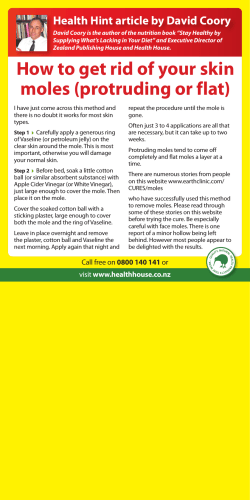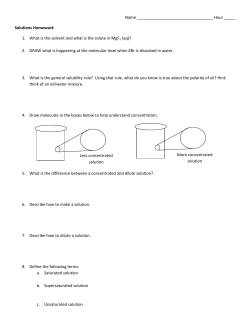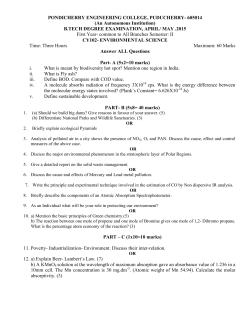
5Th Six Weeks Cumulative Test Review H2 + 1 02 [ mole 02
Date
Name
Period
5Th Six Weeks Cumulative Test Review
Define
Mole ratios for the decomposition of water:
2
H2 +
H20 -)
1
02
/ mole 02
mole H2
b,
What is a limiting reactant?
C,
What is the excess reactant?
d.
What is actual yield?
e,
What is theoretical yield? .... ii'lr
II,
[ mole 02
2- mole H20
2-- mole H2__O
_2_ mole H2
ÿ'IQ d':ÿ..t,ÿ..".[:L:'ÿ1tÿ, ::>ÿ:
dL . .
<i
, ' '''.)ÿ: ;
Stoichiometry
a. Given this reaction: 3 02 4- 4 AI --> 2 AI203
How many moles of aluminum (AI) are needed to react with 1.60 moles of oxygen (02)?
• }
I ',2
f
"ÿ
b. Given this reaction: 2 Li + 1 Na2SO4 --> 1 Li2SO4 + 2 Na
How many moles of lithium (Li) are needed to react with 4.3 moles of sodium sulfate (Na2SO4)?
:
"
¢':+'
ÿ?_ €2ÿ0
,
<-
,Y\:,-: :,
., /
").. !. ;,.,\ ÿ
C":
[
c. Given this reaction: 2 H2 + 1 02 ÿ 2 H20
/'-
When 13.6 grams of Oxygen combines with Hydrogen, how many Molecules of H20 are produced?
d. Given this reaction: 1 C3H8 4- 5 02 ÿ 3 CO2 4- 4 H20
How many liters of gaseous CO2 will be produced if 148.9 grams of C3H8 are used? (Assume STP.)
't [ÿ-.,:. ÿ :. tI
:,., :;
.. ,>: ,((:i
l
'
J '
III.
Pressure/Volume/Temperature
A.
B.
-4o °c: 255 K
IV. Relationships Between Variables
A. Pressure and volume have a/an
:T
"Oir tc i-
B. Pressure and temperature have a/an
relationship.
C. Temperature and volume have a/an
D. When pressure increases, volume
E. When pressure decreases, temperature
relationship.
p.
.(T is constant)
i'ÿ#ÿ :ÿ ,ÿ ¢<: ÿ
.(V is constant)
"")]" • :P,,,2,ÿ,ÿÿ :ÿ7'
F. When temperature increases, volume
.... < • e:ÿ-sÿ,'- ÿ, .(P is constant)
G. When temperature increases, kinetic energy
-, s.ÿ : : ,ÿ::z ÿ..p i:"
C ,.,ÿ ,: ÿ.<',<-"L ÿ
H. When kinetic energy increases, molecule speed
V,
relationship.
'" 7" ÿ : : ( Q :, ÿ ,,_¢ e
ÿ .< ÿ, .ÿ : ÿ:ÿ,.-.
Gas Laws
A.
A balloon contains 122 mL of gas confined at a pressure of 1.01 atm and at a temperature of 21.0 °C. If the bottle is ,ÿ -ÿ°7ÿ
attached to the wing of a jet plane and flown to an altitude at which the pressure is 0.330 atm and temperature is 2.09 °C,
what wil! the volume of the gas in the bottle be?
B. What is the temperature of 3.81 moles of carbon monoxide gas with a volume of 8.23L held at a pressure of 66.21 kPa?
O
,v')ÿ
5;ÿ' t 7..5, /
C.
Ifa balloon full of nitrogen gas has a volume of 2.7 L and a pressure of 6.0 atm, what is its new pressure if the volume falls
to 0.60 L? Temperature remains constant.
D. What is the total pressure (in mmHg) exerted by a sample of gases containing 319 mmHg H2, 201 mm Hg N2, and 67
mm Hg 02.,2
?1, ::" -
VI,
Solution Definitions
is present in the smaller amount and the ÿ,-qÿ-(ÿ}oÿ ('ÿ, :L)*< f/If-
a. In a solution, the
is present in the greater amount.
-f7
b.
.............
ÿ
......................
t
A solution contains 4ÿg of sugaÿand i180 g of waterI Circle the solute. Box the Solvent.
'ÿi" " fI" ÿ'J',ÿ" ÿf ÿ, .... lÿ
solutions contain the p3aximum amount of solute that can
C.
be dissolved at that temperature.
ÿ,) ÿk) ÿ/ÿ,ÿ/ÿ {ÿ ÿ-ÿ!'-t0(ÿ{'ÿ
the maximum; b, <.ÿ"#:} kÿ;. t pÿ,<ÿ:'i D ÿ'4.:Iÿ'Cÿ
solutions contain less than
solutions contain more than the maximum.
VII, Solubility
a. What 3 factors affect the amount of solubility (if & how much dissolves)? Label the one that applies
only to gases.
.
( ÿ,+ÿ Oÿe.ÿ<O,,
k"
,,,
.
/ 4;(,, ÿ(.%(::... ,,
,
!:ÿi ÿ
......
-
1 ÿC,PcÿFYÿ
{
</'ÿJ
b. What 3 factors affect rate of solubility (or how FAST it will dissolve)?
i"-"
|
C,
For a solid in a liquid...
• When temperature decreases, solubility ( INCREASES /
IS NOT AFFECTED ).
• Agitation <!NCREASESÿ/ DECREASES / DOES NOT AFFECT )the rate of solubility
• When pressure increases, solubility(INCREASES/DECREASES ÿT'AFFECÿED-ÿ)>
• When larger parUcles are used, the rate of solubility ( INCREASES ÿRÿ;/) IS NOT AFFECTED).
d. For a ÿ in a liquid...
• When temperature decreases, solubilityÿi iNCREA'ÿE-ÿ / DECREASES / IS NOT AFFECTED ).
f .............
• When pressure increases, solubilityÿ('iNCREASEÿsÿ/DECREASES / IS NOT AFFECTED ).
VIII,
a.
Colligative Properties
List the three colligative properties:
tÿ'ÿ( b. What effect does adding salt have on water?
IX. Solubility Calculations
Solubility Curves
2O0
180
d 160
I KNO3
E 140
MgSO4
o
o 120
--.'-
100
80
o
0
60
40
,ÿ 20
0
o
O3
i
0
i
'ÿ
i
i
i
50
i
i
i
100
150
Temperature, °C
Liq ,
a°
Who much MgSO4will dissolve in 100 mL of water at 50 °C? ÿ£ÿL/ÿ:L-
b.
A solution that contains 120 grams of MgSO4 in 100 mL of water ÿ3t 80 °C would be saturated,
O
unsaturated, or supersaturated? SO ÿ ÿ_ Sÿ,ÿ- L) fn(ÿ..ÿ ;'ÿ°CC ÿ, ....C,
A solution that contains 30 grams of KNO3 in 100 mlÿ of water at 20 °C would be saturated,
unsaturated, or supersaturated? t J) ÿ'\i (ÿ .Aÿ
.\ ,ÿ (ÿ,ÿt_.
d. What mass of MgSO4 will result in a saturated solution in 100 mL of water at 20 °C?
X.
Concentration/Dilution
a. What is the molarity of 2.5 L of solution that contains 1.3 mol MgCl2?
b. If you had 40.0 mL of a 3.00 M hydrochloric acid solution and you wanted to dilute it to 2.00 M,
what would be the new volume?
© Copyright 2025









